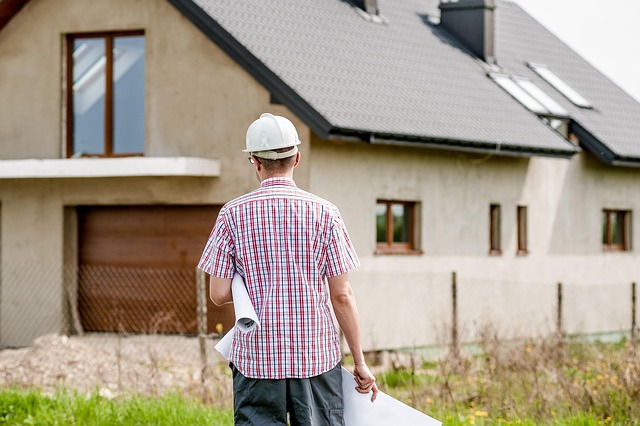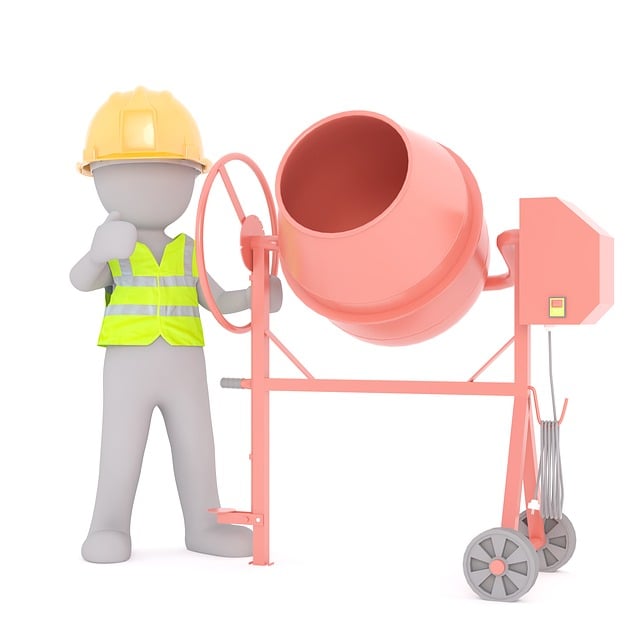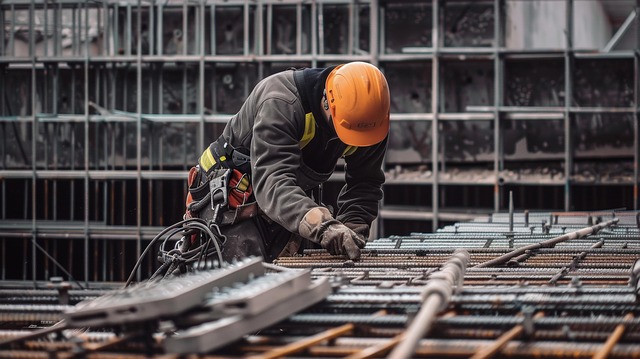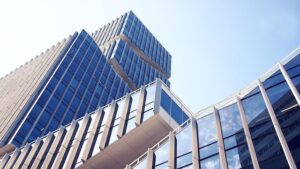Commercial properties often require roof replacements due to wear, harsh weather, and aging materials. An overlay roof is a cost-effective, energy-efficient alternative to complete replacement, extending structure life. Choosing the right commercial re-roofing contractor involves verifying expertise, reviewing past projects, checking warranties, and getting transparent quotes. They begin with assessments, provide detailed estimates, and install durable, energy-efficient roofing systems using modern materials. Regular maintenance, including inspections and proper ventilation, is crucial for maximized lifespan after re-roofing.
When a commercial property’s roofing system reaches the end of its lifespan, it’s time to consider a full replacement. This process, known as commercial re-roofing, involves more than just installing a new layer; it’s about ensuring structural integrity and enhancing the building’s curb appeal. Understanding when and why roof replacements are necessary is key for property managers. This comprehensive guide explores the entire process, from identifying the need to selecting suitable roofing materials, and offers insights on choosing the best commercial re-roofing contractor for your project.
- Understanding Commercial Re-Roofing Needs
- Common Reasons for Replacing Roofs on Commercial Properties
- Key Factors to Consider When Hiring a Commercial Re-Roofing Contractor
- The Step-by-Step Process of Commercial Roof Replacement
- Types of Roofing Materials Suitable for Commercial Buildings
- Ensuring Longevity and Maintenance Post-Re-Roofing Installation
Understanding Commercial Re-Roofing Needs

When it comes to commercial properties, understanding the unique roofing needs is essential. One common scenario involves businesses seeking a complete overhaul of their existing roofing system, often referred to as re-roofing. This process typically arises from several factors, such as an old, damaged roof, or the need for improved energy efficiency and durability. Unlike residential roofs, commercial structures usually have flat or low-sloped roofs, requiring specialized knowledge and materials from a qualified commercial re-roofing contractor.
The decision to reroof is not just about aesthetics; it’s a strategic move to protect the building’s structural integrity and ensure a safe working environment. Many commercial properties opt for an overlay roof as a cost-effective solution, adding a new layer over the old one, instead of removing and replacing entirely. This method is especially beneficial for flat roofs, offering a practical and efficient way to extend the life of the existing structure, while also enhancing energy performance with proper insulation and sealing.
Common Reasons for Replacing Roofs on Commercial Properties

Commercial properties often require roof replacements due to a variety of reasons. One of the most common is the deterioration of the existing roofing system over time. Regular wear and tear, exposure to harsh weather conditions, and aging materials can weaken the integrity of the roof, making it more susceptible to leaks, structural damage, and other issues. According to industry experts, regular inspections are crucial for identifying these problems early on, preventing costly repairs, and ensuring the longevity of the building’s structure.
Another significant reason for re-roofing commercial properties is the need to upgrade to a more efficient and sustainable system. Many businesses are opting for reroof flat roofs or overlay roof solutions to incorporate additional insulation, reduce energy costs, and meet modern environmental standards. Additionally, with advancements in roofing technology, there’s a wide range of high-performance materials available, such as durable membranes and impact-resistant shingles, that can enhance the structural integrity and resilience of second roof layers against extreme weather events. This not only provides peace of mind but also contributes to the overall value and appeal of the property, making it an attractive option for commercial re-roofing contractors.
Key Factors to Consider When Hiring a Commercial Re-Roofing Contractor

When seeking a commercial re-roofing contractor for your property, several key factors should guide your decision. Firstly, verify their expertise in handling similar projects to yours, ensuring they have the skills and experience needed for a successful reroof. Experience counts when it comes to navigating complex roofing challenges unique to commercial properties, especially those with an overlay roof or a second roof layer.
Secondly, check their reputation by reviewing client testimonials and past project portfolios. This step is vital in gauging the quality of their work, reliability, and customer satisfaction. Additionally, confirm if they offer warranties on their services and materials, providing extra protection for your investment, especially for reroof flat roofs. A reputable contractor should be able to provide transparent quotes, detailing costs and the scope of work, allowing you to make an informed choice.
The Step-by-Step Process of Commercial Roof Replacement

When a commercial property requires a new roofing system, understanding the step-by-step process is crucial. The journey begins with an initial assessment conducted by a seasoned commercial re-roofing contractor. They thoroughly inspect the existing roof, taking note of its condition, age, and any potential issues like leaks or structural damage. This evaluation helps in tailoring a solution to meet the specific needs of the property.
Once the assessment is complete, the contractor provides a detailed estimate outlining the scope of work, materials required, and projected timeline. If the roof is suitable for an overlay roof—a new layer added over the existing one—or if a reroof flat roof is needed due to extensive damage, they’ll explain the options available. The next phase involves preparation: removing the old roofing material, repairing any necessary components, and ensuring the structure beneath is secure. Finally, the new roof system is installed, incorporating modern technology and materials designed for durability and energy efficiency.
Types of Roofing Materials Suitable for Commercial Buildings

When it comes to commercial re-roofing projects, selecting the right roofing materials is essential for durability and long-term cost savings. Commercial buildings often require robust and low-maintenance solutions that can withstand heavy loads and varying weather conditions. Flat roofs are a common characteristic of many commercial structures, and they present unique considerations when compared to pitched roofs.
For reroofing flat roofs or even overlaying an existing roof as a second layer, contractors should consider materials like EPDM (Ethylene Propylene Diene Monomer) rubber membranes. These are known for their flexibility, durability, and resistance to tears and punctures. Alternatively, TPO (Thermoplastic Olifin) membranes offer excellent heat-welded seams, superior puncture resistance, and a wide range of colors to suit various aesthetic preferences. Metal roofing is another popular choice for commercial buildings, providing exceptional longevity, high reflectivity, and low environmental impact. This sustainable option can also enhance the energy efficiency of the structure due to its reflective properties.
Ensuring Longevity and Maintenance Post-Re-Roofing Installation

After a commercial property has undergone re-roofing, ensuring proper longevity and maintenance becomes paramount. A top-tier commercial re-roofing contractor will not only install a robust new roof but also provide guidance on upkeep to maximize its lifespan. This includes regular inspections to identify any potential issues early on, as well as recommendations for specific maintenance tasks tailored to the property’s unique roofing system—be it a reroof flat roof or an overlay roof.
Proper maintenance involves keeping the roof free from debris and ensuring all drains and vents are clear and functional. Using the right materials and techniques during installation also plays a crucial role in long-term performance. For instance, a skilled contractor might recommend additional underlayment or flashing for enhanced protection against extreme weather conditions, extending the second roof layer’s effectiveness.
